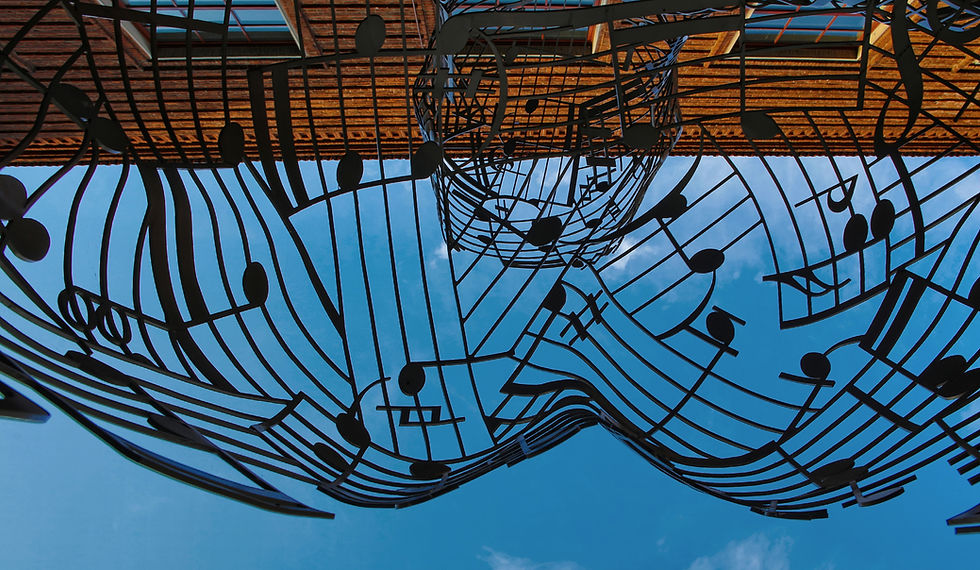The Best Kind of Music
- Carla Tanguay, MA, MT-BC

- May 20, 2019
- 4 min read
Updated: May 21, 2019
One of the first questions people ask me about music therapy is, “What kind of music do you use?” or "What type of music is best for..."
The answer is pretty simple. What music do you like?
The deliberate use of someone’s preferred music is one of the most powerful tools in a music therapist’s toolbox. Why? Here are five reasons music therapists use your favorite kind of music in therapy.

#1. Listening to your favorite music is enjoyable.
Perhaps this one is obvious. Your favorite music is likely your favorite because you love listening to it. But you may not realize that your brain loves your favorite music as well. Music recruits the same pleasure pathways in the brain as sex, food, and drugs. Listening to your preferred music causes a biological response in your body through the release of dopamine and natural opioids, making you feel good.
Feeling better is often the ultimate goal of therapy. Research shows that listening to preferred music can increase feelings of relaxation, pain tolerance, comfort. For someone who is facing mental or physical health challenges, improvement in mood and wellbeing are critical. For others, music therapists use client-preferred music to help associate the challenging tasks we work on in therapy with the feel-good chemicals released when we hear our favorite music. So someone working on a difficult learning or physical rehabilitation task will find the experience much more enjoyable when paired with their favorite music, and be more likely to stick with it.
#2. Your favorite music uses your brain differently.
Our brains are engaged differently when listening to music we like versus music we don’t like. Preferred music changes the connectivity between auditory brain areas and regions responsible for memory and emotion in a way that doesn’t happen when we listen to less preferred music. A 2014 study in Nature showed that listening to our favorite song activates the default mode network in our brain, which is active when we are self-aware, empathetic, or introspective.
This is particularly important when working with people who have neurological diseases, such as Alzheimer's or Parkinson's disease. The regions of our brain activated by personally meaningful music are some of the last to be impacted by degenerative brain diseases. This means that even people with advanced dementia can have dramatic responses when listening to their favorite music. Music therapists are trained to select and implement music interventions that maximize these responses and help clients and families achieve meaningful outcomes.
#3. Music preference is part of your identity.
Music preference is an important part of identity. We take pride in being able to list all of our favorite artist’s albums, or in knowing rare trivia about a favorite band. Our music preference says something important about who we are, and asserting and strengthening this aspect of our identity can be an important part of the therapeutic process.
Therapy is about change, and change is scary. It can be less scary when we feel connected to healthy parts of ourselves. Music therapists use a client's musical preferences as a foundation for the work of therapy. So if a client's goal is pain reduction and she loves heavy metal music, then we integrate heavy metal music into our treatment plan. If a child loves Raffi, then Raffi songs are what music therapists will use when working on speech sounds or sensory integration goals.
#4. We connect with others through music.
Music directly impacts brain circuits involved in social connections- more specifically, those relating to empathy, trust, and cooperation. We feel connected to people that we share music with (see our previous post about the benefits of group singing), and connection is vital to our health and wellbeing.
Music therapists use music, especially a client's favorite type of music, because it helps create connection, trust, and cooperation. Sharing musical preference is like sharing a language, and once we are speaking the same language, we can work much more effectively towards common goals. This connection can happen even when clients are nonverbal, as music becomes our language of connection.
#5. Your favorite music is motivating.
When we hear music we love, we are motivated to participate. That might mean singing along, even for someone who struggles with speech or confidence. It might mean dancing, working out harder and longer, or just tapping our toes, even for someone who has challenges with motor control. It might mean directing your attention towards the music instead of focusing on pain or discomfort. Research shows that people will engage in a difficult task longer when their favorite music is playing, making it a powerful motivator for learning and improving our health and wellbeing.
Music therapists use your favorite type of music in therapy because it is more motivating, and motivation is one of the strongest predictors of good therapy outcomes.
Your Best Music
Only you can judge what kind of music is the best for your purpose or goal. Want to go a bit deeper? Look for future posts about the iso-principle and how you can use various elements of your favorite musical style to affect your mood, energy levels, and productivity.
Until then, please contact us with any questions or comments, or to schedule a consult.



